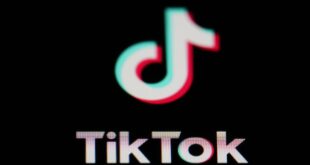Business leaders always say they want to hear their people’s best ideas.
Unlike many of them, Sal Sferlazza actually means it.
For the cofounder and CEO of tech startup NinjaOne, ensuring that employees trust they can speak their mind is crucial to building a culture of creativity.
NinjaOne, which specialises in automated endpoint management for mobile and other devices, counts HelloFresh, Nissan, and Nvidia among its clients. The company aims to innovate by challenging conventional wisdom, Sferlazza tells me from Austin, Texas.
To that end, every one of its 1,300 employees is a product manager, he says. So people shouldn’t feel shy about pushing ideas and concerns up the chain of command.
“And if you don’t get the answer you like, but you have conviction that you’re right, and there’s some new, creative thing that you think should be in the product or a new way to engage our customers, you should escalate it all the way to me.”
Sure enough, Sferlazza receives at least a dozen such messages a week from employees at all levels of the business. “To foster that creativity, you have to create an organization where people are not scared to escalate problems for fear of repercussion from their manager or their peers,” he says. “It’s not about egos. It’s about, ‘Let’s get to the right answer together’.”
There’s evidence that creative companies fare better financially. When McKinsey devised a metric to explore the link between creativity and business performance, it struck gold. Compared to their peers, roughly 70% of businesses in the top quartile for creativity enjoyed above-average organic revenue growth, total return to shareholders, and net enterprise value.
As it expands, NinjaOne is constantly launching new groups – say, to develop another product or enter a fresh geographic market. The company trusts those teams to think like startups, with the freedom to ask for forgiveness rather than permission, Sferlazza explains.
“It’s almost like having multiple incubators,” says the serial entrepreneur. “You guys don’t have to follow all the rules of the large organisation in order to foster creativity and find ways to build our brand or build our culture or to build better products.”
That mindset extends to the big picture. When Sferlazza recently met with an employee, he asked for five ideas that would change the trajectory of the business. He sees the leader’s role as “inviting your staff to participate in that journey, versus being the CEO that comes down from the mountain and says, ‘This is the Bible or the vision of how the company is going to be’.”
When recruiting, NinjaOne puts the same premium on creativity. Candidates are asked how they would apply what they’ve done elsewhere to solving problems for their new employer. “The power of creativity is to be able to leverage those past experiences by changing them or making them purpose-built for the company,” says Sferlazza, who holds a monthly “meet the CEO” meeting with new staff worldwide. “Out-of-box creative thinking will be rewarded always.”
For Sferlazza, keeping that culture of creativity alive also means hiring a specific kind of fellow leader. First, he says, they should be servant types who check their egos at the door. The other key quality: “I want to find leaders that agree with me 95% of the time, and 5% they’ll fight me like hell because I’m wrong,” Sferlazza says. “I believe that any leader is only as smart as the collective intellect of the people that report to them.”
Hear, hear. – Fortune.com/The New York Times
 BeritaKini.biz Berita Viral Terkini di Malaysia
BeritaKini.biz Berita Viral Terkini di Malaysia





